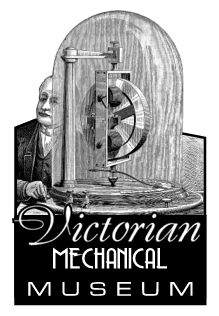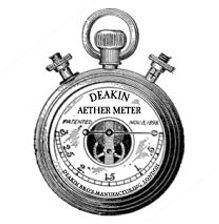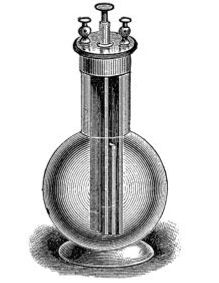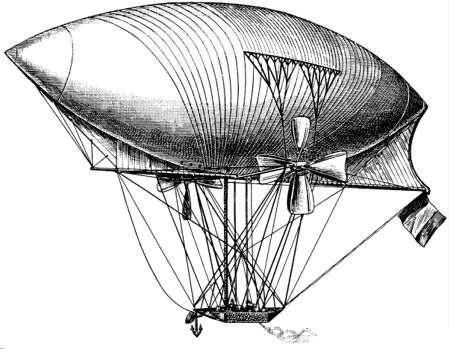 |
| Collection Item 86: The Cyncad Packet |
We have mentioned the name of Enoch Cyncad a number of times over the course of our online exhibition, but he has largely remained an enigmatic, albeit rather sinister player in the Hawkins Strongbox histories. With the release of Collection Item 86, we hope to bring at least some clarity to this figure whose machinations led Geoffrey Hawkins and his associates to form the Society of the Mechanical Sun.
Item 86 is a packet that was sent from London to the Kansas City office of the Vanderzee Detective Bureau in September of 1895. It contains a Scotland Yard circular, a cabinet card portrait, and a short handwritten note from Berkley Vanderzee to Geoffrey Hawkins. It appears to relate directly to Item 85: The Fitzgerald Envelope. Items 85 and 86 have been now designated as Lot 7: Hawkins in Kansas City. Researchers at the Victorian Mechanical Museum indicate that additional items in this lot are forthcoming.
 |
| Item 86A: Handwritten note to Geoffrey Hawkins. |
The text of the handwritten note (Item 86A):
As noted previously, the contents of the Fitzgerald Envelope indicated that Geoffrey Hawkins was in Kansas City, Missouri during the mid-1890s, apparently conducting an investigation into the whereabouts of Enoch Cyncad. It appears that Hawkins contacted Berkley Vanderzee in London to request identifying materials relating to Cyncad. Vanderzee in turn dispatched the packet that contained the circular and cabinet card.Geoffrey,Your news was indeed distressing to us all. We thought that devil was returned to hell itself. We hope these prove helpful, despite the time that has passed. The studio in Edinburgh had retained negatives, fortunate for our purposes.10 October, 1895
Be well my friend,
Berkley
 |
| Item 86B: Scotland Yard Circular. October 1877. |
The Scotland Yard Circular (Item 86B) is dated eighteen years earlier. It advertises a £500 reward for information leading to the capture of Cyncad, described as a convicted murderer and escapee from the then infamous Newgate Prison. It refers to Cyncad as the Edinburgh Frankenstein and notes that the escape from Newgate took place on 21 October, 1877.
According to newspaper accounts from the summer of 1877, Cyncad, then a well known doctor and academic from the University of Edinburgh, was at the center of a London medical scandal that involved experimentation on live human subjects. The "heinous acts" noted in the circular purportedly focused on surgically implanting mechanical automata directly into the anatomy of kidnapped victims. Cyncad had enlisted members of the London criminal underworld to procure the necessary test subjects, typically from the city's poor and indigent population. His actions were exposed by one of his former students, Dr. Jeremiah Hawkins, older brother of Geoffrey Hawkins. Before being taken into custody, Cyncad violently murdered Jeremiah Hawkins. That act of revenge became the most prominent of the crimes for which Cyncad was ultimately convicted. His escape from Newgate took place mere hours before his scheduled execution by hanging.
 |
| Item 86C: Cabinet Card of Enoch Cyncad. November 1876. |
The Cabinet Card of Enoch Cyncad (Item 86C) was procured from the studio of Wm. Tower and Son in Edinburgh. A notation on the back of the card dates the studio sitting to November of 1876.
The events of 1877 were only the beginning of what would become a decades-long plague of crime and horror initiated and perpetuated by Enoch Cyncad. He would give birth to the monstrous clock-heads, corrupt the science of ætherdynamics and rule a criminal underworld that would stretch from the old rookeries of London to the American frontier.




















